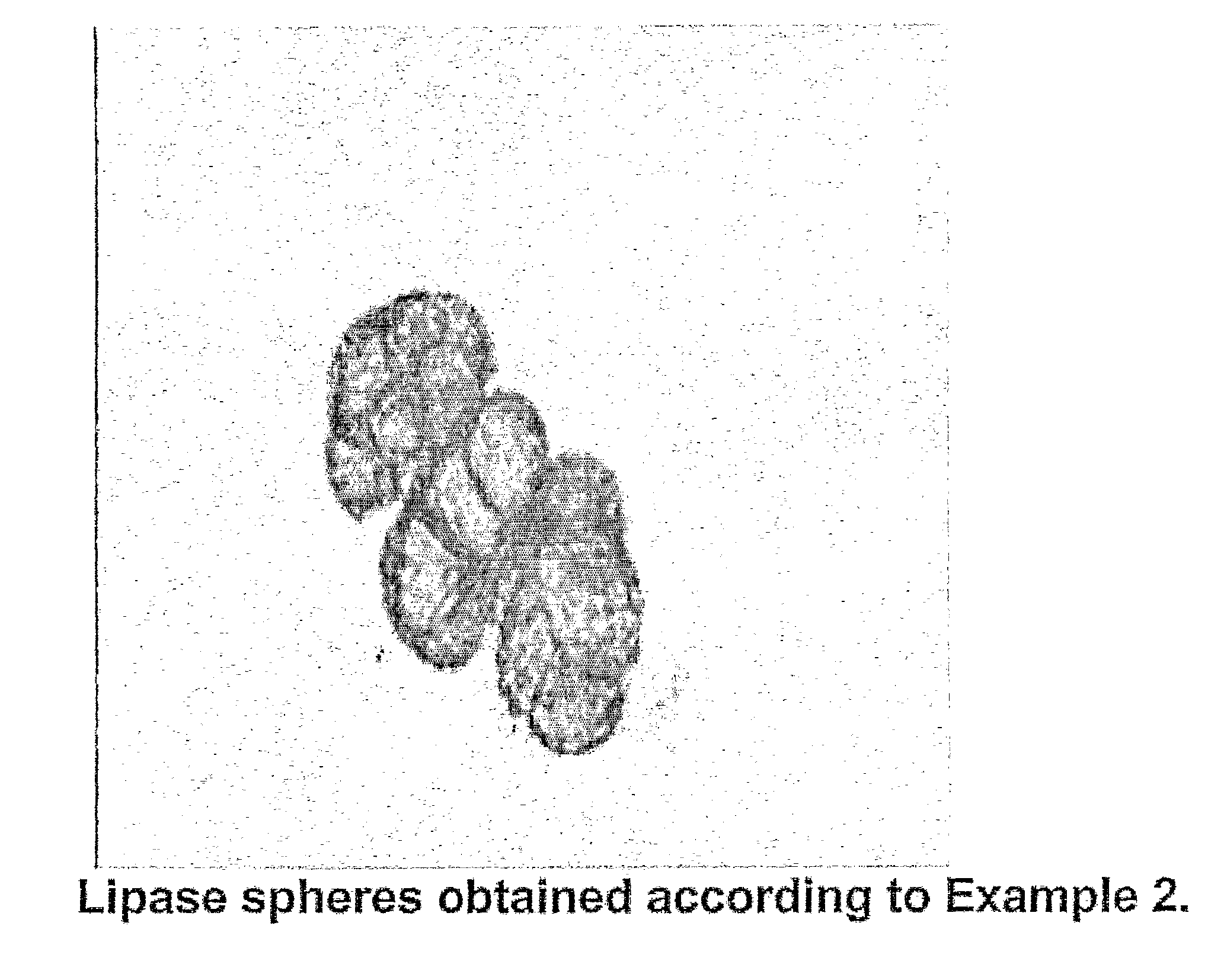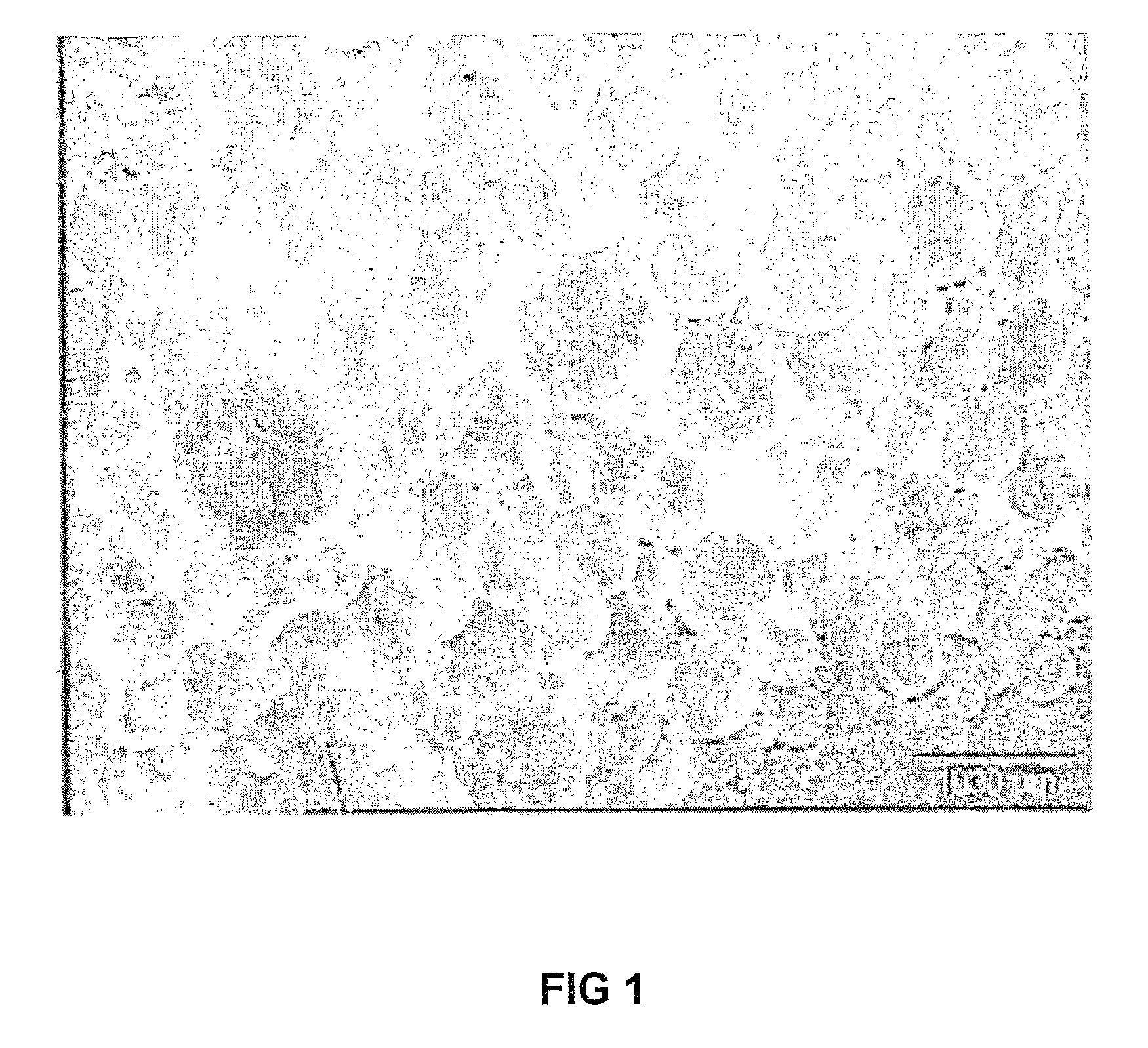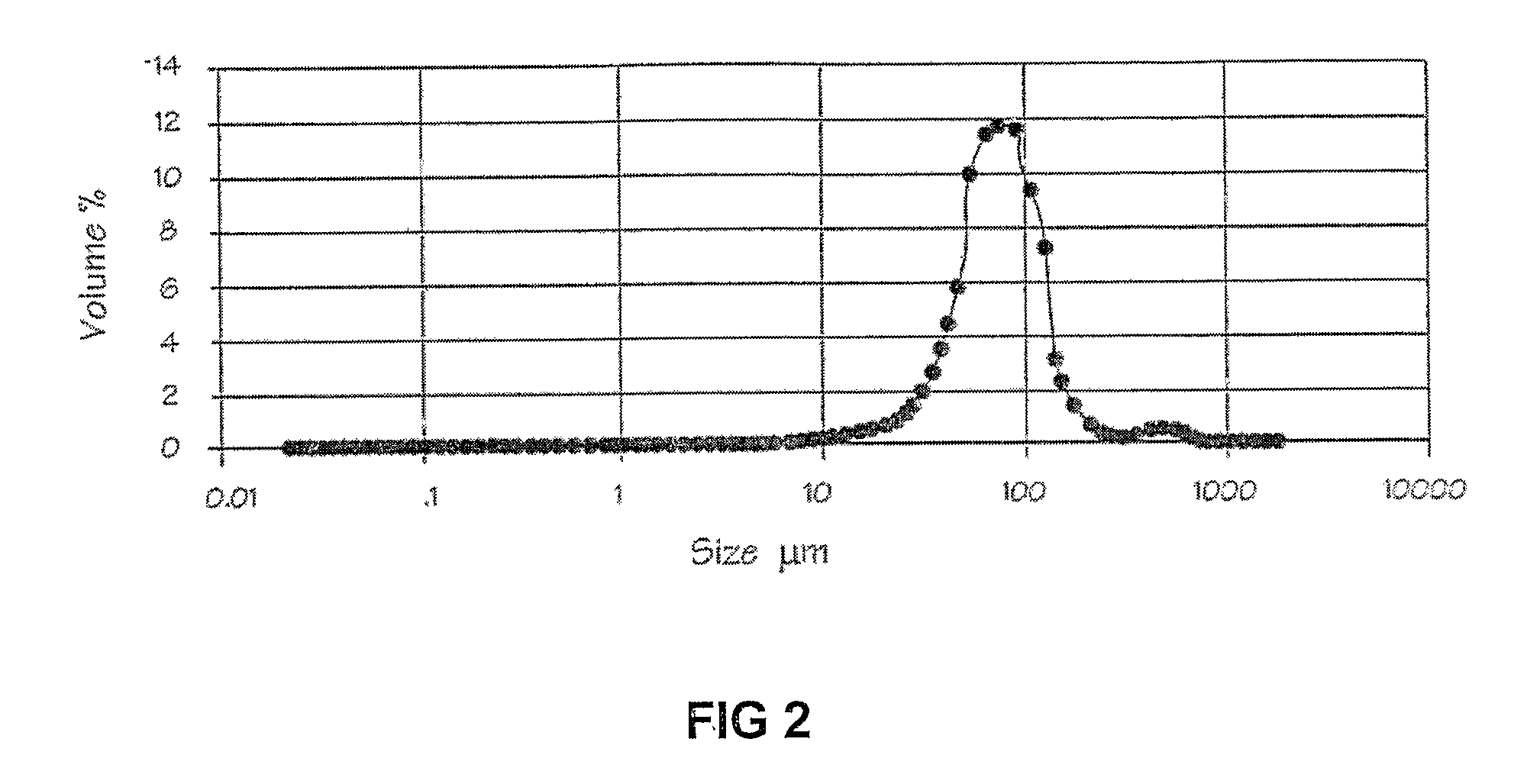Stabilization of enzymes in an emulsion by cross-linking
a technology of cross-linking and enzymes, applied in the field of enzyme stabilization, can solve the problems of difficult recovery of soluble enzymes, limited application and shelf life of enzymes, and difficult use of many processes of enzymes, so as to facilitate cross-linking of enzyme molecules, improve results, and not damage the stabilized enzyme structure
- Summary
- Abstract
- Description
- Claims
- Application Information
AI Technical Summary
Benefits of technology
Problems solved by technology
Method used
Image
Examples
example 1
Non-Optimized
Cross-Linked or Stabilized Lipase Spheres (Structures) from Water-in-Oil Emulsion
[0042]1 g of lipase Amano AK was added to 195 g phosphate buffered saline (PBS) solution (pH 7.8) and 5 g mineral oil (Castrol). This blend was then homogenized for 5 minutes using a Silverson L4R laboratory rotor-stator homogenizer at 6000 rpm. 1.5 g of hexamethylene di-isocyanate (Merck Schuchardt) was added to the emulsion. The emulsion was then stirred at room temperature for 2 hours. The cross-linked enzyme structures were then recovered by filtration using 0.45 μm filter paper and washed 5 times with 50 ml of PBS each time (total 250 ml PBS). FIG. 1 shows typical stabilized enzyme spheres or structures obtained according to the method. Particle sizes were determined using laser light scattering (Malvern Mastersizer 2000), and an average Sauter mean diameter of 49.4 μm was obtained (see FIG. 2).
[0043]The activity of the stabilized enzyme (lipase) structures was determined using a ρ-Nit...
example 2
Cross-Linked or Stabilized Lipase Spheres (Structures) from Water-in-Oil Emulsion
[0045]A lipase solution was prepared by resuspending Candida rugosa lipase (Altus Biologics, Inc.) in 100 mM Tris-Cl (Tris(hydroxymethyl)aminomethane) buffer (pH 8.0) to a final concentration of 100 mg / ml. The enzyme sample was diafiltered using an Amicon ultrafiltration cell fitted with a 10 K polyether sulfone membrane (Microsep (Pty) Ltd, PO Box 391647, Bramley 2018, South Africa) against 3 volumes of 100 mM Tris-Cl buffer (pH 8.0).
[0046]Lipase spheres were prepared using the following reagents in the following volumes: 200 μl Candida rugosa lipase solution (as prepared above); 50 μl nonoxynol-4; 50 μl tributyrin; 5 ml mineral oil. This mixture was emulsified by stirring for 1 minute at 1500 rpm. To this solution 40 μl gluteraldehyde was added (25% aqueous solution) and allowed to stir for a further 10 minutes. The emulsion was allowed to stand at 4° C. for 12 hours.
[0047]After crosslinking the emuls...
example 3
Dextran Aldehyde as Cross-Linker
[0050]Example 2 was repeated, except that the cross-linking agent used was activated dextran from leuconstoc species, average molecular weight 20 kDa (dextran aldehyde), the oil phase was vegetable oil, the ratio of lipase solution to Tris buffer was 1:1, and no surfactant was used. Dextran aldehyde was prepared by reacting dextran with excess sodium metaperiodate as described by Hong, T., Guo, W., Yuan, H., Li, J., Liu, Y., Ma, L., Bai, Y., & Li, T. (2004) ‘Periodate oxidation of nanoscaled magnetic dextran composites’, Journal of Magnetism and Magnetic Materials, 269, 95-100. Activity obtained was 7.5% (for ρ-nitrophenylpalmitate) compared to the original free enzyme in aqueous solution.
PUM
| Property | Measurement | Unit |
|---|---|---|
| critical point | aaaaa | aaaaa |
| Sauter mean diameter | aaaaa | aaaaa |
| concentration | aaaaa | aaaaa |
Abstract
Description
Claims
Application Information
 Login to View More
Login to View More - R&D
- Intellectual Property
- Life Sciences
- Materials
- Tech Scout
- Unparalleled Data Quality
- Higher Quality Content
- 60% Fewer Hallucinations
Browse by: Latest US Patents, China's latest patents, Technical Efficacy Thesaurus, Application Domain, Technology Topic, Popular Technical Reports.
© 2025 PatSnap. All rights reserved.Legal|Privacy policy|Modern Slavery Act Transparency Statement|Sitemap|About US| Contact US: help@patsnap.com



